By Walter Díaz Sequeira (Honduras + Bolivia) and Noemy Salvatierra Rivero (Bolivia)
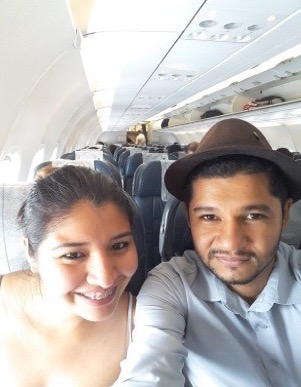
Walter and Noemy on the plane (first time for Noemy!)
We were invited to be international participants in Planting Peace 2017 in Alberta, Canada. It is a two-week intercultural educational program for peace. This program brings together young-adults from different parts of the world as well as national participants, with different beliefs, but all with a single vision and interest in exploring topics and initiatives for peace and justice. In Calgary, Canada, we had the opportunity to talk a little about the context and reality of Bolivia according to our lived experience and experiences of those we know. Our presentation was able to give participants a good sense of what Bolivia is like. We were also able to hear more about the context of other countries and to be able to better understand their realities and the current situation of each of the participating countries. The countries represented were Lebanon, Syria, Laos, India, Zimbabwe, Bolivia, and the host country, Canada. We also participated in various group activities. At Camp Valaqua we participated and enjoyed many fun activities. All of the activities had a message to reflect on and challenged us to discover that we are unique and with very different problems, however, regardless of all of the different ways of thinking we had something in common. We had the same vision and are on the same journey to build peace in each of our contexts (countries).
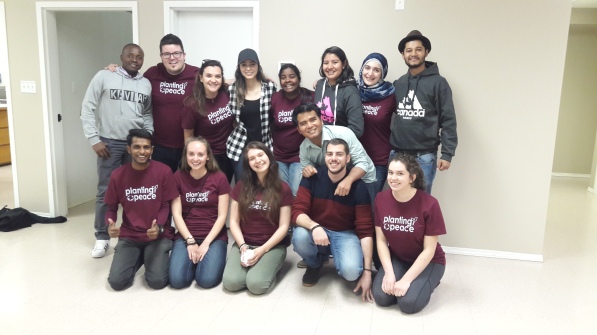
Planting Peace group representing 7 countries
Edmonton: This was a learning tour to explore the issues of resource extraction and listen to Northern Alberta perspectives. During this time, we were in workshops on issues of peace and conflict of various cultures and perspectives of faith.
Fort McMurray: We had an oil sands tour (Suncor Company) and the opportunity to tour Fort McMurray & Oil Sands by plane.
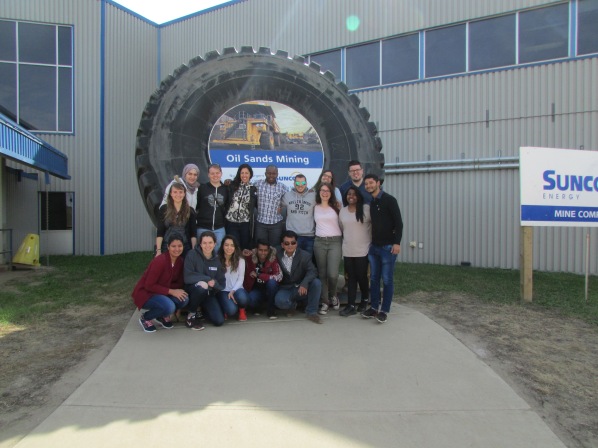
Visiting the Suncor Oil Sands
Blue Quills: We visited an Indigenous University where we were able to meet with the indigenous elders who talked a little about their stories about the mistreatment that the indigenous people suffered in Canada in the so-called residential schools. There were many years of mistreatment that included taking them from a young age far from their homes where they could not speak in their languages and forcing them to learn another language and cultural customs. These schools no longer exist and the last one closed in 1996. Now Canada is in dialogue about forgiveness with the indigenous peoples and helping to rectify all the damages that happened during the time of existence of the schools.
After learning about all that has happened with Indigenous peoples, we think that it will take time to reach reconciliation. Since there are consequences that continue to hurt some indigenous people who have not been able to have a normal life and are in a slow process of healing. The country must not forget or ignore the commitment and the long journey that reconciliation can take.
Mustard Seed: We got to know a little about the current situation of homeless people in Canada and a center that works with them. We heard about how they collaborate and help those in need.
After that we visited the Drop-in Center that also works for the people who live on the streets. They have programs to rehabilitate people and integrate them into society. This can take time and that is why the Drop-in Center helps them in everything that is needed. They have a network of volunteers who contribute to the care and welfare of these people every day. There is a large space for people, but in the winter time this space may be insufficient for everyone. We collaborated with the Drop-in Center cooks and volunteers to serve lunch and it was a very rewarding experience. We were grateful because we were part of a beautiful act of love by serving our neighbours.
Head-Smashed-In Buffalo Jump: We loved this trip where we explored and were shown how the Blackfoot people hunted buffaloes once a year. They fed on them and used their skins for clothing as well as to make their homes and work tools. It was great to be close to how they developed in their work and how they organized among themselves.
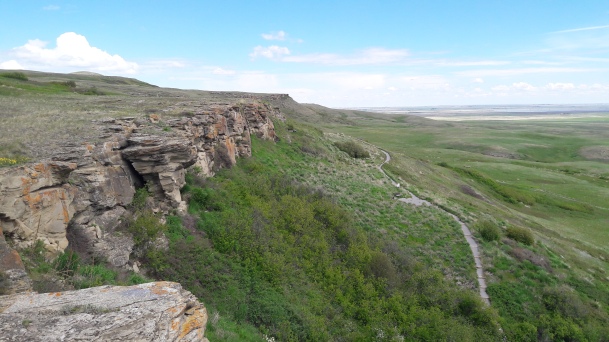
Head-Smashed-In Buffalo Jump World Heritage Site
We experienced a lot of things, but inside this brief summary are some of the many things we experienced in our time in Alberta, Canada. We are grateful to have been part of this great experience. We were challenged and above all motivated to continue in the work of peace. We know that we received lots of blessings from God through the people who made this possible. Going forward we are convinced that we are called to make a small change in our context with our church community and friends and it gives us so much encouragement to know that in other parts of the world there are people who are also doing the same work for peace.
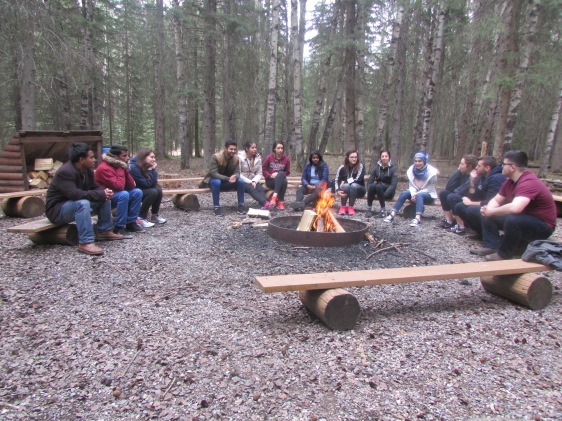
Debrief time at Camp Valaqua